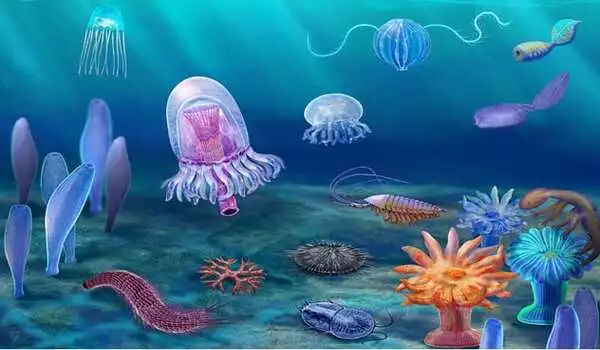Paleontologists carefully study and analyze new fossils to identify the organisms to which they belonged and to determine their characteristics, behaviors, and ecological roles. Scientists can gain a better understanding of the ancient world and how life has changed over time by comparing these fossils to known species and studying their anatomical features.
Biomarker signatures discovered recently point to a wide range of previously unknown organisms that dominated complex life on Earth about a billion years ago. They differed from complex eukaryotic life as we know it in cell structure and likely metabolism, which was adapted to a world with far less oxygen in the atmosphere than we have today. An international team of researchers, including GFZ geochemist Christian Hallmann, now reports on this breakthrough for the field of evolutionary geobiology in the journal Nature.
Throughout Earth’s Middle Ages, previously unknown “protosteroids” were discovered to be surprisingly abundant. The primordial molecules were created at a lower level of eukaryotic complexity, extending the current record of fossil steroids beyond 800 million years ago and up to 1,600 million years ago. Eukaryotes are a kingdom of life that includes all animals, plants, and algae. They differ from bacteria in that they have a complex cell structure that includes a nucleus as well as more complex molecular machinery.
“The highlight of this finding is not just the extension of the current molecular record of eukaryotes,” Hallmann says: “Given that the last common ancestor of all modern eukaryotes, including us humans, was likely capable of producing ‘regular’ modern sterols, chances are high that the eukaryotes responsible for these rare signatures belonged to the stem of the phylogenetic tree.”
We used a combination of techniques to first convert various modern steroids to their fossilized equivalent; otherwise, we wouldn’t have known what to look for. Once we knew what we were looking for, we found that dozens of other rocks from billion-year-old waterways around the world were oozing with similar fossil molecules.
Jochen Brocks
Unprecedented glimpse of a lost world
This “stem” represents the common ancestral lineage that gave rise to all still-living eukaryotes. Although its representatives are long extinct, details about their nature may shed light on the circumstances surrounding the evolution of complex life. Although more research is needed to determine how many protosteroids may have come from a rare bacterial source, the discovery of these new molecules not only reconciles the geological record of traditional fossils with that of fossil lipid molecules, but also provides a rare and unprecedented glimpse into a lost world of ancient life. The competitive demise of stem group eukaryotes, marked by the first appearance of modern fossil steroids some 800 Million years ago, may reflect one of the most incisive events in the evolution of increasingly complex life.
“Almost all eukaryotes biosynthesize steroids, such as cholesterol that is produced by humans and most other animals” adds Benjamin Nettersheim from the University of Bremen, first author of the study – “due to potentially adverse health effects of elevated cholesterol levels in humans, cholesterol doesn’t have the best reputation from a medical perspective. However, these lipid molecules are integral parts of eukaryotic cell membranes where they aid in a variety of physiological functions. By searching for fossilized steroids in ancient rocks, we can trace the evolution of increasingly complex life.”

What the Nobel laureate thaught impossible…
Nobel laureate Konrad Bloch speculated on such a biomarker in an essay nearly 30 years ago. Bloch proposed that short-lived intermediates in modern steroid biosynthesis may not have always been intermediates. He believed that throughout Earth’s history, lipid biosynthesis evolved in tandem with changing environmental conditions. Unlike Bloch, who did not believe that these ancient intermediates could ever be discovered, Nettersheim began looking for protosteroids in ancient rocks that were deposited at a time when those intermediates could have been the final product.
But how do you look for such molecules in ancient rocks? “We used a combination of techniques to first convert various modern steroids to their fossilized equivalent; otherwise, we wouldn’t have known what to look for,” says Jochen Brocks, an Australian National University professor who co-authored the new study with Nettersheim. For decades, scientists had overlooked these molecules because they did not fit into typical molecular search images. “Once we knew what we were looking for, we found that dozens of other rocks from billion-year-old waterways around the world were oozing with similar fossil molecules.”
The oldest samples with the biomarker are 1.64 billion years old and come from Australia’s Barney Creek Formation. The next 800 million years of rock record only yields fossil molecules of primordial eukaryotes before molecular signatures of modern eukaryotes appear in the Tonian period. According to Nettersheim, “the Tonian Transformation emerges as one of the most profound ecological turning points in our planet’s history.” According to Hallmann, “both primordial stem groups and modern eukaryotic representatives such as red algae may have lived side by side for many hundreds of millions of years.”
However, during this period, the Earth’s atmosphere became increasingly enriched with oxygen, a metabolic product of cyanobacteria and the first eukaryotic algae that would have been toxic to many other organisms. Later, global “Snowball Earth” glaciations occurred, wiping out the protosterol communities. It is possible that the last common ancestor of all living eukaryotes lived 1.2 to 1.8 billion years ago. Its descendants were probably better adapted to heat and cold, as well as UV radiation, and displaced their ancestors.
We will never know for certain how most of our early relatives looked because all stem group eukaryotes are long extinct, but artistic efforts have created preliminary visualizations (see pictures attached), and the primordial steroids may eventually shed more light on their biochemistry and lifestyle. “Earth was a microbial world for much of its history, and it left few traces.” Nettersheim comes to a close. The discovery of protosterols now brings us one step closer to understanding how our earliest ancestors lived and evolved, according to researchers at ANU, MARUM, and GFZ.
















